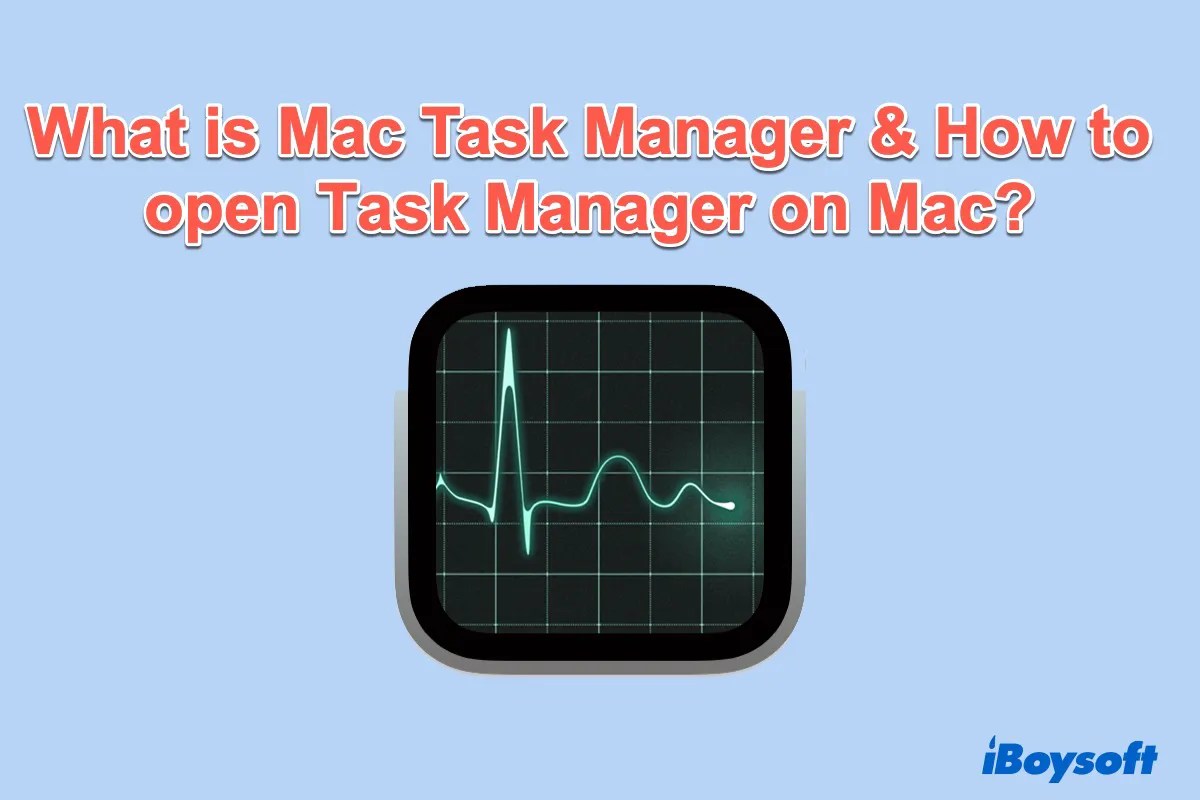If you’ve been using Windows for a long time and have recently switched to a Mac, you might be wondering where is task manager on Mac or how to get Task Manager on Mac. Isn’t it? After being Windows for quite a while, most users develop a habit of hitting “Ctrl + Alt+ Delete” to bring up Task Manager to force quit an app or check what’s slowing down the system. There is also a Windows Task Manager equivalent on Mac that provides similar information and tools. This article will tell you how to open and use Task Manager on Macs. Here you go!
Task Manager Equivalent on Mac
Windows computers have a Task Manager that allows users to see what programs are running on the computer, check resource consumption, and manage and troubleshoot tasks. Every Mac has a Task Manager equivalent called Activity Monitor. This built-in macOS utility offers a detailed look over your Mac’s process, including applications and system tasks. You can check the currently running processes & apps and how much system resources each process is using Also, this Mac task manager equivalent lets you force quit apps that you can’t close the usual way.
How to Open Task Manager on Mac
Unfortunately, the “Ctrl + Alt+ Delete” keyboard shortcut won’t open Mac’s task manager a.k.a. Activity Monitor for you. That said, it’s super easy and quick to open Activity Monitor on your Mac. Here are some ways to do it.
Method 1: Using Spotlight
Spotlight search is one of the quickest ways to open MacBook’s Activity Monitor. Since you can access Spotlight from any window or app you’re working on, you always have your Mac’s task manager at your disposal. Here’s how to do it:
- Use “Command + Space” keyboard shortcut to open Spotlight on your Mac.
- Now, start typing Activity Monitor.
- Once it comes up highlighted, hit Return or click on Activity Monitor to open it.

Method 2: Using Finder
- From the Dock, open Finder.
- Navigate to the Applications from to left sidebar.
- Now, click on Utilities in the Application windows and double-click on Activity Monitor to open it.
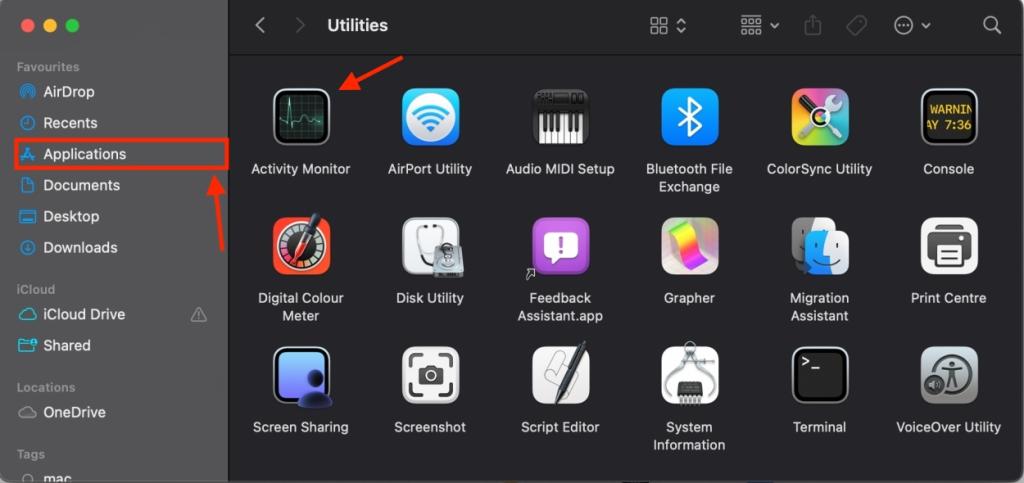
Method 3: Using Launchpad
- From the Dock, open Launchpad.
- Click on Others and you’ll see Activity Monitor.
- Double-click to open Activity Monitor on your MacBook.

Method 4: Using Dock
If you need Activity Monitor more frequently, you must pin it to the dock for easier access. This will act as a handy, one-click shortcut to open task manager on your Mac. Here’s what you need to do:
- First, open Activity Monitor on your Mac. You can use any of the ways discussed above.
- Once it is active, right-click on the Activity Monitor icon in the Dock.
- Click on Options and then select Keep in Dock.
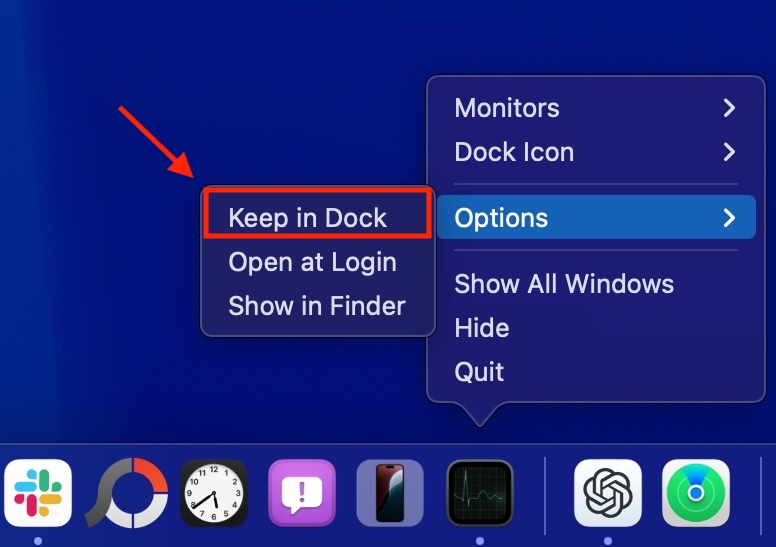
The Activity Monitor will now stay in the Dock and you can launch it anytime like any other app or program.
How to Use Task Manager on Mac
Activity Monitor is the task manager on Mac. If you’ve always used a Windows computer, you might need to learn how to use Activity Monitor. We’ve mentioned some of the most useful ways to use Task Manager on your Mac. Let’s check them out.
Check CPU Usage
Activity Monitor has a CPU tab that shows real-time CPU usage. It shows processes currently taking up your Mac’s CPU, how much power they are consuming, and tells you how long they have been running. To know which processes are consuming the most CPU, click on the %CPU column. This will sort the process by CPU usage, from highest to lowest.
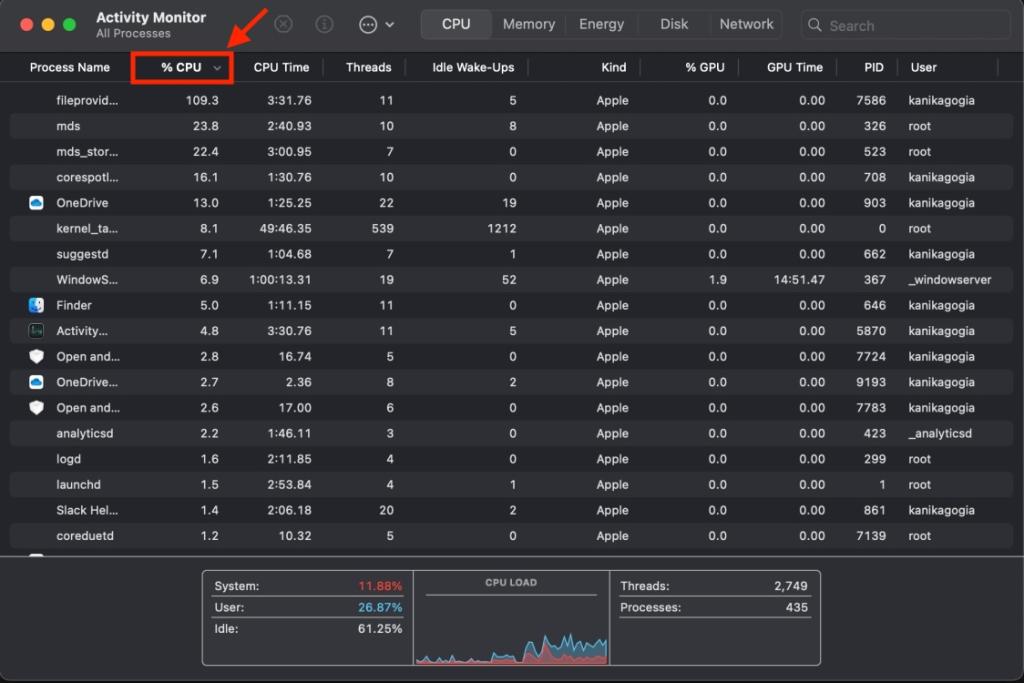
You’ll notice a process named “kernel_task” could be taking a large share of the CPU. Don’t freak out and don’t shut it down. It’s an essential macOS process that simply manages the temperature of your CPU by making it less available for processes and apps that are using it intensively.
Check RAM usage
If your Mac is working too slowly, you can use Activity Monitor to check RAM usage on your Mac. Since RAM is directly responsible for maintaining the speed on your device, RAM usage can help you figure out the reason for slow performance so you can speed things up.
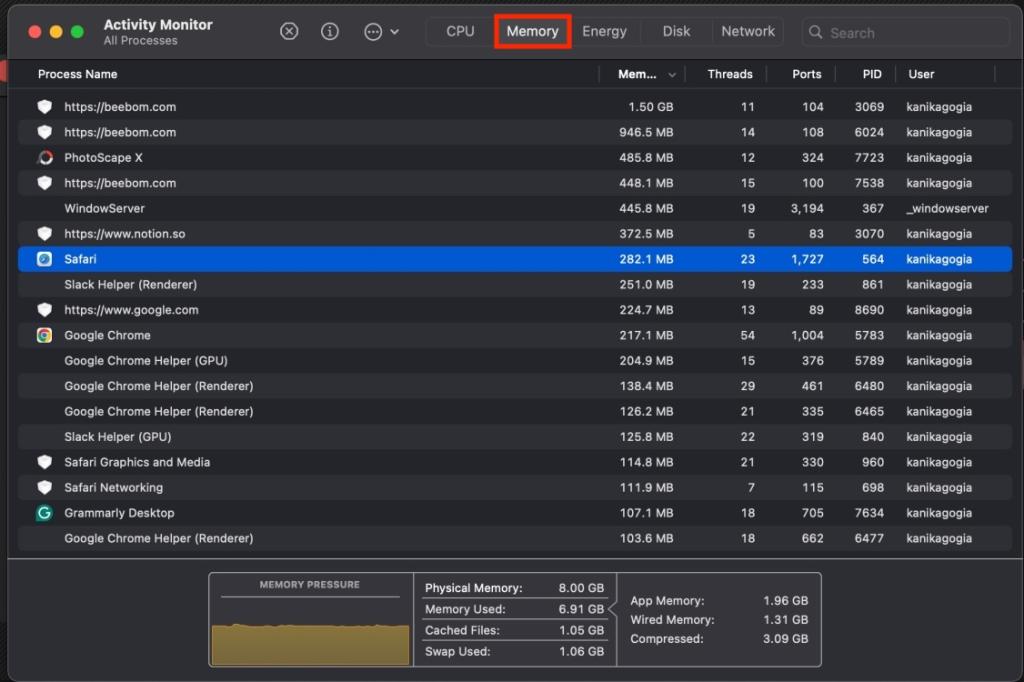
To check RAM usage, click on the Memory tab at the top. At the bottom, you’ll see a Memory Pressure Gauge that indicates the system’s ability to meet the memory requirements of the user. Higher memory pressure may degrade the system’s performance. If the bar turns red, you might want to expand the memory for your machine.
Check Energy Usage
There can be instances when your MacBook battery drains abnormally and you have no clue why is this happening. In such cases, you can use Activity Monitor to check the real-time energy consumption on your Mac. Simply click on the Energy tab from the top. This will show you how much battery your apps and processes are using. If you spot some battery-draining apps, quit them to extend your screen time.

Check Disk Usage
Unlike other tabs in Mac’s task manager, you might not use the Disk tab very often in your everyday routine. This tab shows the number of times different processes interact with the hard disk to read and write data. If some processes are rewriting a lot of data, they might be malware. You must quit them immediately.
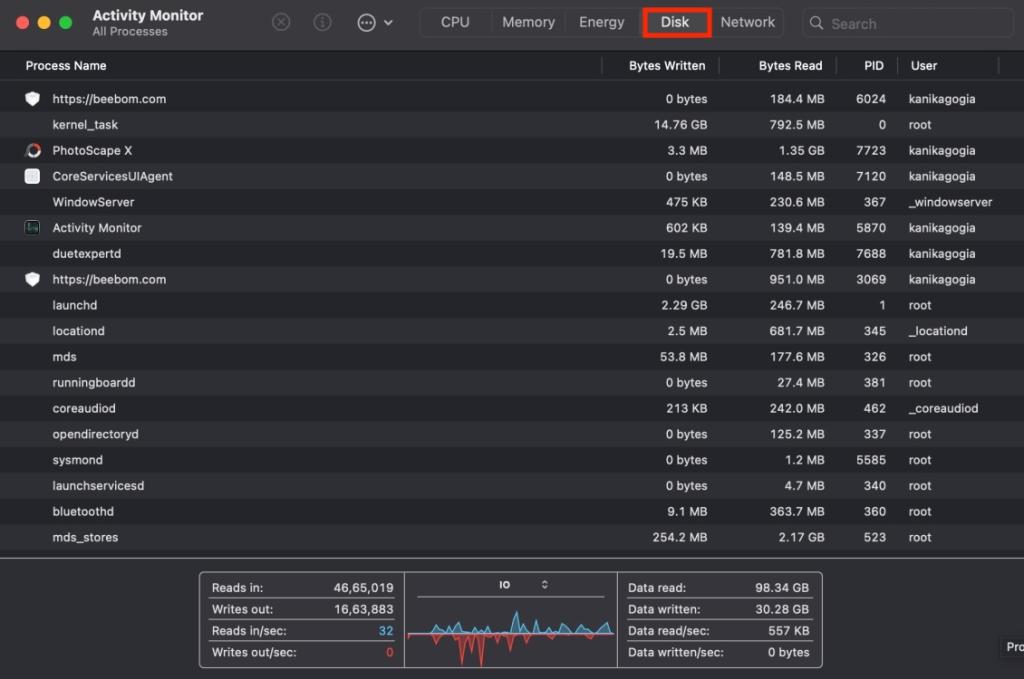
Check Network Usage
Finally, there’s a Network tab in Mac’s Activity Monitor that shows the amount of data received and sent by every app that you have on your machine. While you won’t use this frequently, it can help you spot apps and processes that send too much data online.
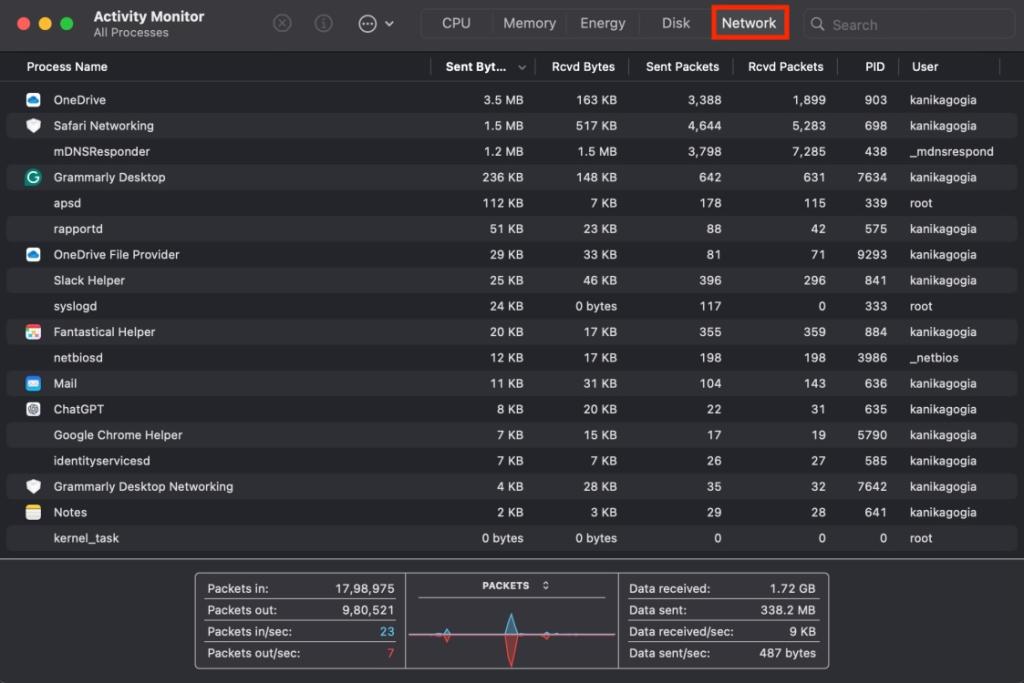
Force Quit Apps and Processes on Mac
The Activity Monitor on Mac lets you force quit apps that aren’t responding or can’t be closed as usual. Also, it allows you to see and quit background processes that you won’t see normally. This comes in handy when your Mac is running slowly or an app is misbehaving.
- Open the Activity Monitor.
- Browse through the list of processes and spot the app you wish to close.
- Now, click the “X” button in the upper-left corner.
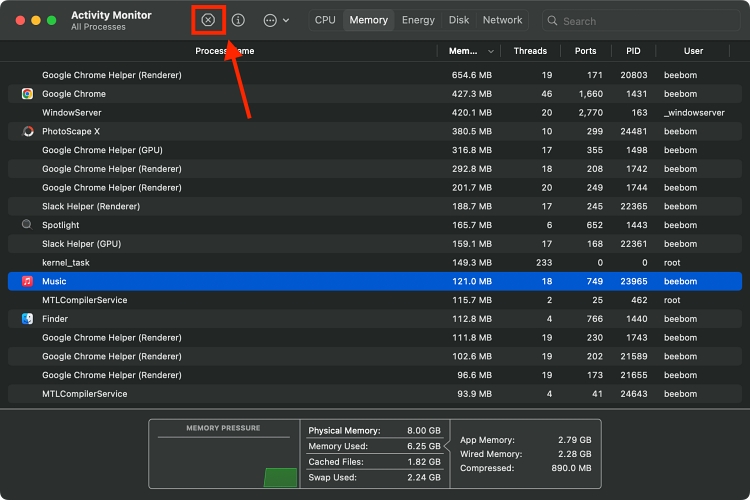
- In the pop-up window, click on the “Force Quit” button.
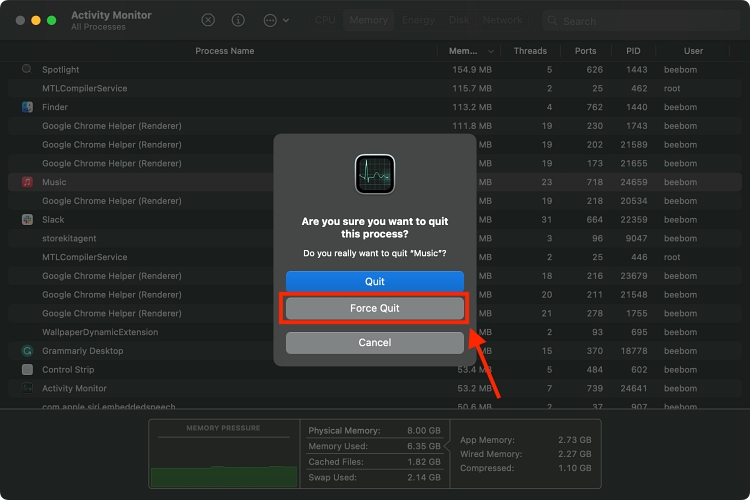
Inspect Processes in Activity Monitor
You can also dive deeper and inspect a specific process running on your Mac. This information comes in handy when you’re facing slow performance on your Mac running slowly. It might help you spot the app or background process that’s slowing down the system.
Here’s how to inspect a process on Mac:
- In the Activity Monitor, double-click the process you wish to inspect.
- This will open a new window showing in-depth information about the process.
- When you click on Parent Process, it will show up another window with information about the parent process.
- The Memory tab will show the real-time CPU usage of the process.
- The Statistics tab will show some technical information, including the number of threads a process is using.
- The Open Files and Ports shows the files and ports the app is using at a given time.
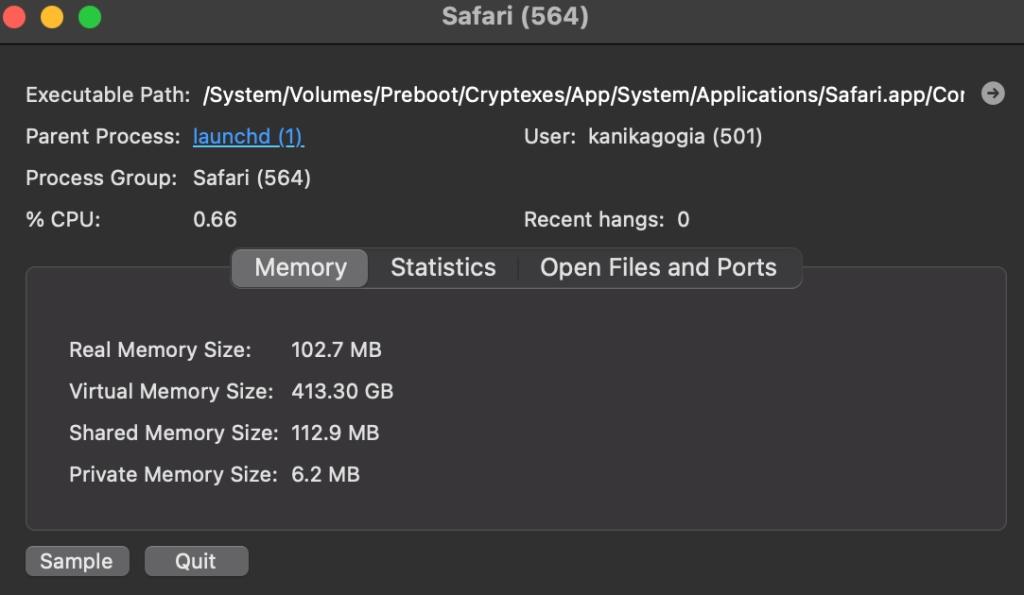
Activity Monitor is the Mac equivalent of the Windows Task Manager.
You can use Spotlight search to find and open Activity Monitor on your Mac. You can also go to Finder -> Applications -> Utilities -> Activity Monitor or open Launchpad -> Others -> Activity Monitor.
10 Best Windows 11 Themes To Download For Free
NYT Strands Today: Hints, Answers & Spangram For August 27
Sony Announces “Technical Presentation”; Is The PS5 Pro Coming Tomorrow?


